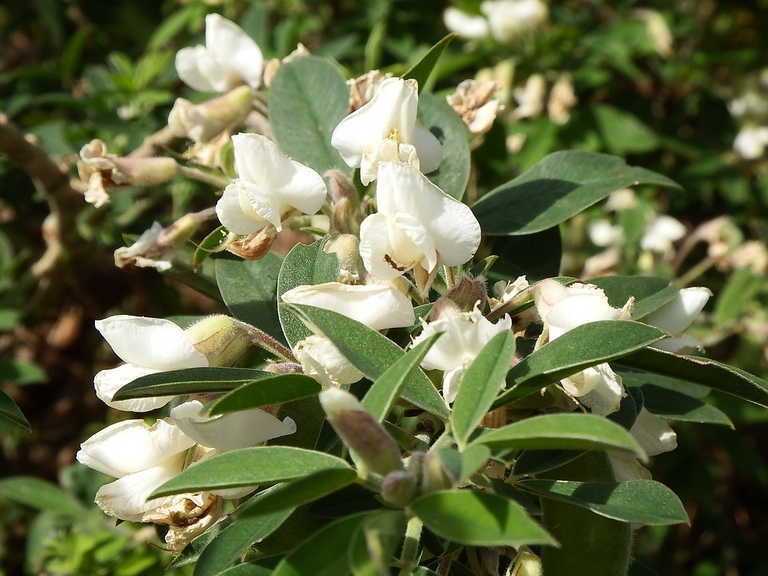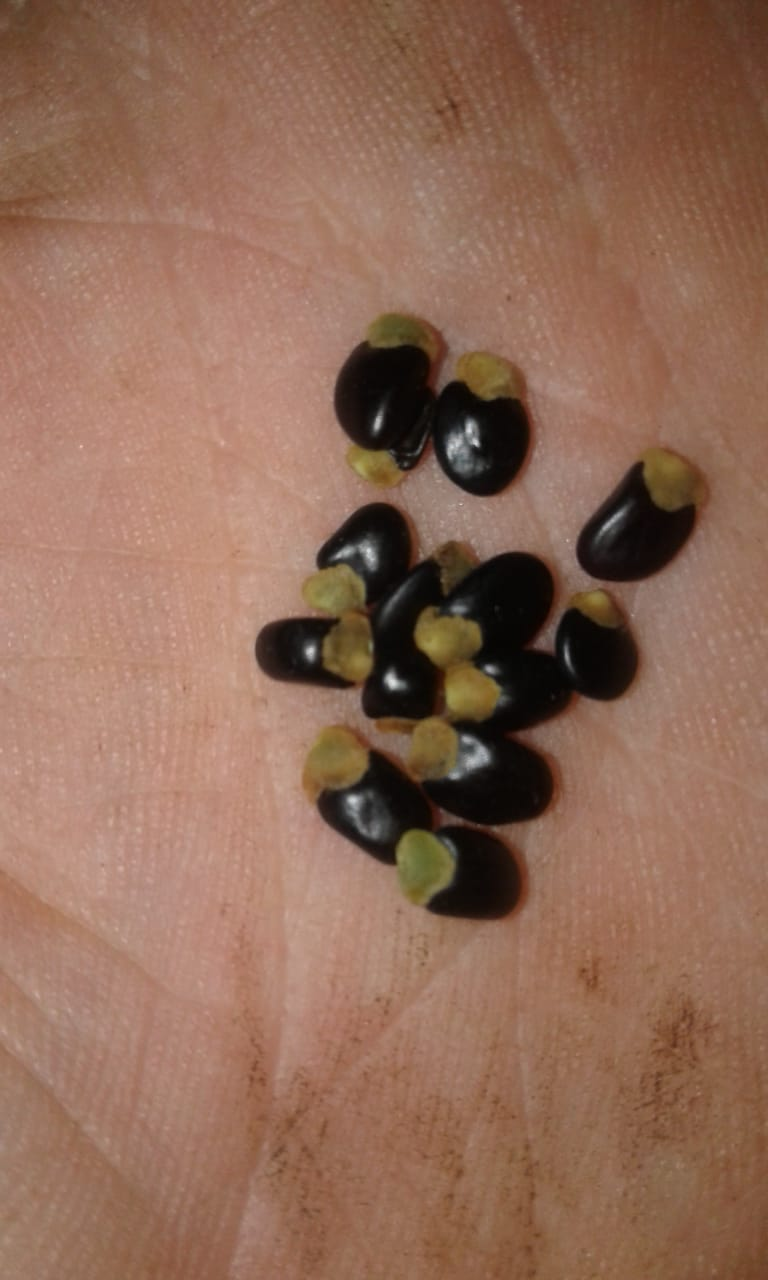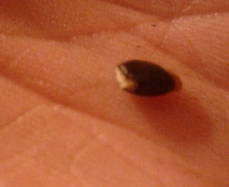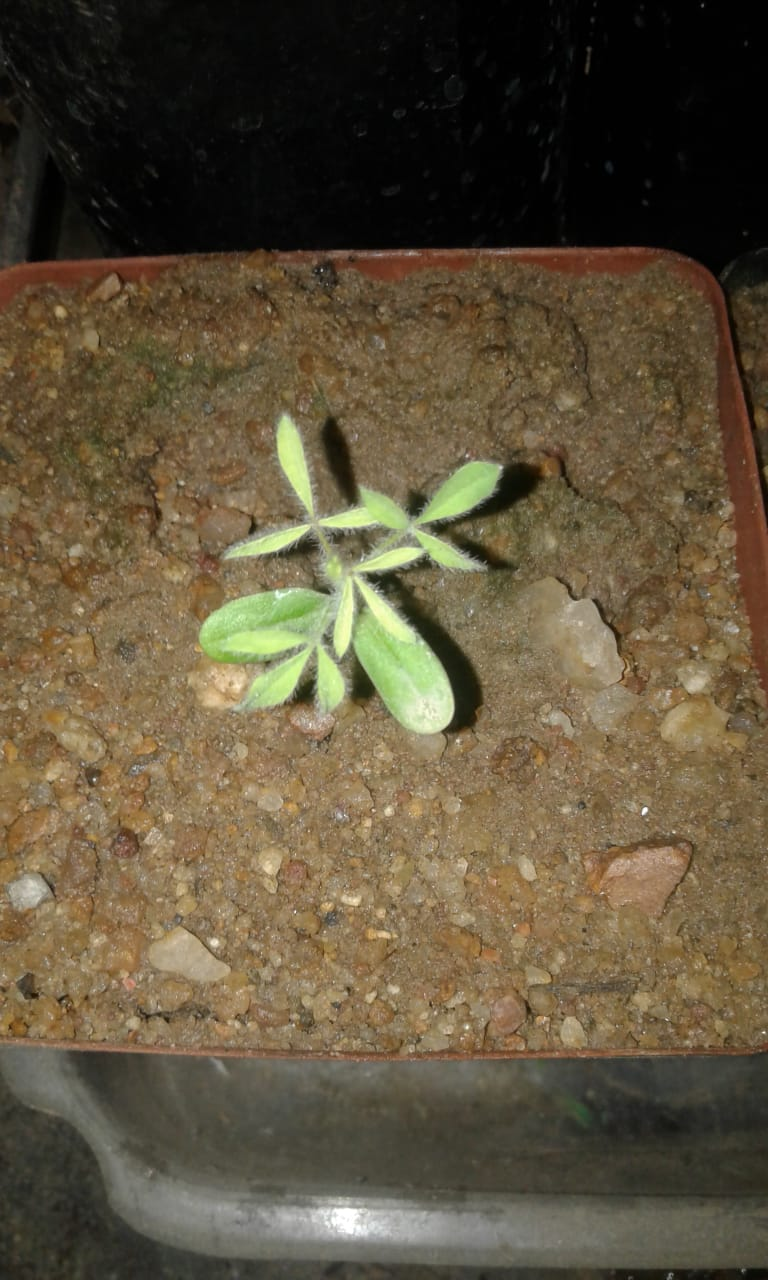Hope Grows on Trees - Propagation, Scarification and a whole Bunch of Headaches

One thing you should know about farmers - are that they are resourceful and wise when it comes to making the most of their land, and they are always trying to find more productive ways of working with the resources they have at hand, every acre of land needs to be managed intensely in order to produce maximum capacity because water as well as available farming-land is a rare commodity in South Africa at the moment for the farmers here. Especially with the Government laying claims on farms as well as the drought.
Recently I have been doing some research on one specific crop that has the ability to increase the yield of fodder feeds, and as such I have entered into a propagation agreement with a local farmer who wants me to germinate the seeds for him. First lets have a look at this wonderful plant...
Tagasaste Tree also known as the lucerne tree
Biological name ~ Chamaecytisus palmensis
The tree lucerne is a fodder feed plant that maintains nutrition throughout the year and its nutritional and protein values can be compared to that of ground lucerne or alfalfa. One of the great aspects of this plant is that it is a fast growing evergreen legume plant that can grow for up to 20 to 40 years ( I found that some sites claim that they can grow for up to 80 - I guess time will tell) and all while working on Nitrogen-fixing above all that.
What makes this tree exceptionally viable for South African agriculture, (and other parts of the world as well) is the fact that it is extremely drought resistant once it has been established but also that it can survive frost, cold, strong winds as well as heat, and an additional bonus is that it can grow up to 6 meters tall in six years.
This means that tree lucerne is a can be a sustainable and cost effective fodder crop that has the potential of increasing the carrying capacity of the land immensely. To give you an idea, local lucerne farmers are averaging a harvest of 5 tons per hectare and they can harvest 4 times per year - that gives you 20 tons of lucerne per year, per hectare. With the tree lucerne your harvest can increase to 13 tons per harvest per hectare, and you can harvest 4 times a year, that means that you get 52 tons per hectare per year. And the nutritional value is the same as that of normal lucerne, That certainly is a great leap of production if you ask me! But of course this only applies if the plants are managed correctly in a sustainable farming module, and it is also dependent on soil and climate.

So whats the plan?
The farmer that I am working with on this project is a game breeder, and with the ever increasing price of buying in fodder feed for the animals, especially given the current drought, he has decided to set aside 5 ha of land to grow his own feed.
The idea is to plant healthy established lucerne trees in the prepared land with the intention of harvesting 4 times a year once the plant is ready. At this point the soil we intend to use has already been analyzed and has proven itself to be well- balanced, nutrient-rich soil, and although fertilizing will not be necessary, it would be beneficial to our plants if we add some phosphate to the soil before planting out the trees. This will not only help the plant growth, but it also helps to make the leaves more enjoyable for the animals while increasing the percentage of available protein levels. The same applies for irrigation - initial irrigation will be required, but once the plant is well established it will be fine depending on natural water, because the rows of trees end up creating its own micro-climate that allows the deep roots to source water underground while being sheltered from the sun, as the shade secures moisture and prevents excessive evaporation.
We intend to prune and maintain our trees at 700mm, and this is great because the lucerne tree loves pruning and this encourages side growth in stead of upwards growth, the plant will then take about 50 days to fully recover after pruning. It is for this reason that we have also decided to plant additional trees in the game enclosures, these trees will be planted in 700mm cages, meaning that the animals would only be able to graze the protruding branches leaving the established tree in tack, and giving us a constant accessible food supplementation source for the animals. This includes the additional growth of grasses under the tree that will be encouraged by the plants due to the nitrogen restoring properties of the lucerne tree.
In doing this, we will effectively attain, all year round nutritious supplementary food for the animals equivalent to the nutritional value of lucerne, opposed to normal lucerne these trees do not die down or show retarded growth during the winter months, holds a higher yield rate, and no danger of animal bloating, while the lucerne trees also reconditions the soil with nitrogen-fixing nodules. These trees will also attract bees while the plant is in a stage of abundant flowering - and when it comes to farming, bees are a crucial aspect of success, this will also aid in pollinating all other surrounding crops in the area, so it is beneficial to surrounding farmers as well.

Getting started seems to be the hardest part
We aim to plant the trees between 5 and 8 meters apart, that means that we will need about 487 established plants per HA, this means that we will need a total of 2435 plants to fill the 5 HA space that we have set aside for this purpose - and that is a lot of trees. Especially if you have to take into account that germinating these seeds is not the easiest process.

Firstly these tiny seeds need to go through a scarification process, this requires you to cut open the seed shell before soaking them in lukewarm water overnight. On the right you can see one of the seeds that has been cut open and is now ready to be soaked overnight.
Also I have made a short video that explains the scarification process that is required in order to get these seeds to germinate, you can watch that by clicking on the link below.
After the seeds have gone through scarification, they need to be planted into river sand in containers that is deep enough to sustain the plants root-growth once the plant has germinated (this is about 14 days after planting) The seedlings will then remain in the river sand for 30 days before being planted out into at least 30cm deep seedling bags. Again the depth of the bag is extremely important as the plants needs to develop a strong and deep rout system.
Here the plants will remain for the next three months, so that they can grow strong enough to be planted out into the fields. This is normally when the stem of the tree is at least as thick as a pencil.
Although I have worked extensively on germinating and propagating various plants for our farm or on propagation consignments for other farmers, I have to admit that I have not had the best success with getting the lucerne trees to germinate so far. And that these little seed devils have been giving me more than enough headaches.
When you look at the size of the seeds, I am sure you can imagine that it is not the easiest task to cut open their sides without damaging the germ of the seed - which is crucial for plant growth. This is an intensive manual process that has since taught me a bit of patience and a whole lot of new swearwords. But with tons of frustration I am proud to share with you my very first seedling that has emerged (No. 1 of the 2435 that we need to cover 5 HA with... One down 2434 to go.)

Lucerne trees are not only for agriculture:
Just as a little add on, I wanted talk to you about the diversity of this plant over and above its agricultural attributes.
So here is a little bit more information on the application of lucerne trees in other settings such as residential, permaculture and homesteading.
Firstly the Lucern tree is a gorgeous tree and can serve as an aesthetic feature in home gardens, and it will attract birds and bees to your garden with its gorgeous flowers and abundance of seeds. This means that it serves well in permaculture or homesteading environments as well in that regard. And it can even be pruned into gorgeous hedges that work for you, or be left to grow into large trees that can offer some privacy in your garden.
The tree also works well for wind breaks for soft crops and animals alike, and pretty much anything loves to eat this plant, meaning whether you have chickens, rabbits, goats, horses, sheep, cattle or all of the above, you will be creating a food source for your animals by planting these trees. And feed that makes a noticeable difference in your animals well-being. It is great for conditioning animals - especially with lactating animals or even just to shape up the quality of your animal produce, be it meat, wool, eggs or milk.
And when it comes to food forests, they serve as amazing companion plats that enrich the soil and help fertilize the neighboring plants, enriching the soil with nitrogen while their deep taproot system bring moisture to the surface of the soil.
To listen to the audio version of this article click on the play image.

Brought to you by @tts. If you find it useful please consider upvoting this reply.
Great post
👍
👍
You have been curated by @hafizullah on behalf of Inner Blocks: a community encouraging first hand content, with each individual living their best life, and being responsible for their own well being. #innerblocks Check it out at @innerblocks for the latest information and community updates, or to show your support via delegation.
Than you so much @hafizullah and @innerblocks - I appreciate your support!
One Love!
A guy near me who has planted his whole backyard with vegies uses these as a hedge... I had no idea why but now I do. I really enjoyed this post.. learnt a lot. Good luck with growing all you need. I have no patience for germination but I would like to be better as there are plants I want to grow but really struggle to.
Posted using Partiko Android
hahaha yeah, it really is a great plant... If I can get it to grow LOL
And if you ever need help with plants, you are more than welcome to ask, I will help where I can :D
Have a fabulous day!!!
Hi, @breezin!
You just got a 0.56% upvote from SteemPlus!
To get higher upvotes, earn more SteemPlus Points (SPP). On your Steemit wallet, check your SPP balance and click on "How to earn SPP?" to find out all the ways to earn.
If you're not using SteemPlus yet, please check our last posts in here to see the many ways in which SteemPlus can improve your Steem experience on Steemit and Busy.
We need more dedicated people like you, wonderful post
This post has been appreciated and featured in daily quality content rewards. Keep up the good work.
Thank you so much for the support, and the wonderful compliment - I really do appreciate it!
Much Love!